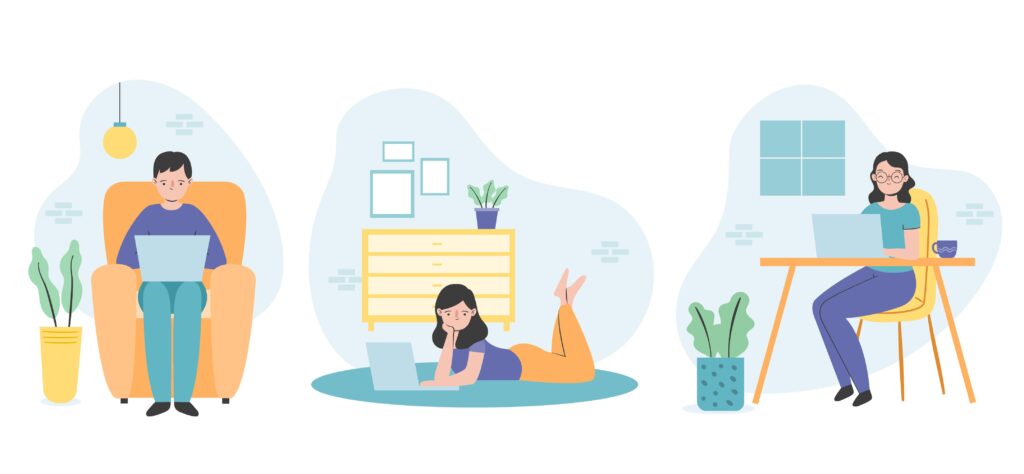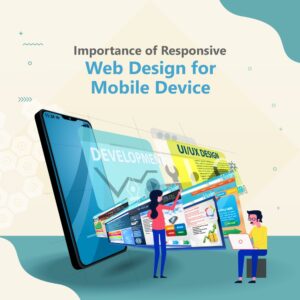The Role of Typography in Effective Web

Typography is the practice of arranging typefaces in a way that is both aesthetically pleasing and user-friendly. The appropriate font, letter spacing, line length, and colour can all be chosen in this manner. Since it may convey a message and establish the tone for the entire design, effectivetypography is crucial in design work. Choosing the appropriate typeface is a crucial component of typography. Various typefaces have distinctive personalities and are able to express a range of feelings. Serif fonts, for instance, can seem more formal and traditional, whereas sans-serif fonts can look contemporary and informal. While choosing a typeface, it’s crucial to keep the intended audience and message in mind. Legibility is a crucial consideration as well.The typeface ought to be readable in both large and small print. Moreover, the letter spacing should be constant and understandable, and the line length should be adequate for the typeface and text. Because the proper hue can inspire feelings and have an impact on the entire design, colour is also a significant component of typography. Because certain people might find it difficult to understand certain colour combinations, colour contrast is also crucial for accessibility. Effective typography, in general, is a crucial element of good design. It can convey a message, establish the mood, and have an effect on a design’s overall look.
Design An effective web design depends heavily on the use of typography. Text should be organised in a way that makes it simple to read, visually appealing, and aesthetically pleasant. Typography aids in web design by helping to construct hierarchy, establish the tone and personality of the website, increase readability, and direct the user’s attention. The use of typography can improve web design in the ways listed below:
Creating Hierarchy
Typography is essential for establishing hierarchy within the material since it can assist readers focus on particular passages of text by using a variety of fonts, sizes, and styles. Indicating headings or subheadings, for instance, with larger font sizes can help readers navigate the content by breaking up long paragraphs. While employing a distinct font style can generate contrast between different areas of the text, bold or italicised font styles can also be utilised to draw attention to certain words or phrases. Font colours can also help establish hierarchy by emphasising particular text components. For example, call-to-action buttons or links might stand out and compel readers to act by selecting a brighter or more contrasting colour. In conclusion, typography is one of the most crucial tools for establishing hierarchy within content since it directs the reader’s attention and highlights crucial information.
Enhancing Readability
Typography plays a significant role in enhancing readability. Effective typography is crucial for any content writer, as it can make or break the reading experience of the audience. Here are some tips to enhance readability through typography
Font selection: The choice of font is critical in typography because it sets the tone of the content. Select a font that is easy to read, such as Sans Serif fonts like Arial, Helvetica, or Open Sans, especially for web content.
Font size: The size of the font is another crucial factor. The font size should be big enough to read comfortably but not too big that it affects the layout of the content.
Line spacing: Line spacing or leading is the space between the lines of the text. It is essential not to overcrowd the content, and a comfortable line spacing can make the content easier to read.
Alignment: The alignment of the text plays a significant role in the visual appeal of content. For example, justified alignment may look neat, but it can lead to awkward spacing and affect readability.
Use of colors: Colors are an essential aspect of typography. Using a combination of contrasting colors for text and background can enhance readability and make the content visually appealing. In conclusion, Typography can make or break the reading experience. When paired with great writing skills, effective typography can go a long way in improving the readability of the content.
Establishing Brand Identity:
The development of a brand’s identity depends heavily on typography. Consistent typography helps to create a memorable and recognizable brand image that can connect with the target audience. Typography can create a visual language for the brand that helps to communicate its values, personality, and tone. Here are some ways in which typography helps to establish brand identity:
Creating a Unique Look: Typography can help create a unique look for a brand. Custom fonts or typefaces can be designed to reflect the brand’s personality and values.
Consistency: Consistent use of typography across all marketing materials, including websites, advertisements, and packaging, help build brand recognition among the target audience.
Emphasize Key Messages: Effective use of typography can help emphasize the key messages a brand is trying to convey. Large, bold headlines can capture attention while smaller font sizes can be used for supporting messages.
Reflecting Personality: Typography can be used to reflect brand personality. For example, a fun and playful brand may use a handwritten script font, while a sophisticated and elegant brand may opt for a sleek sans-serif font.
Establishing Tone: The use of typography can also help establish the tone of a brand. Bold and assertive typefaces can convey confidence and strength, while softer and more rounded fonts can create a friendly and approachable tone. In summary, typography is a key element in establishing a brand identity. Through thoughtful use and careful selection, typography can help create a unique and recognizable brand that connects with its audience.
Guiding the web designer Attention
Typography plays a crucial role in guiding the attention of web designers. It is the art and technique of arranging types to make written language legible, readable, and appealing when displayed, printed, or published. Web designers use typography to guide user attention to specific areas, such as headlines, subheads, and calls to action. By using large, bold typography for headers, designers can draw attention to important information or messages. Similarly, by using smaller, more subtle font sizes for body text, designers ensure that the focus remains on the primary message. The use of typography can also create visual hierarchy, which directs the user’s attention to the most important elements of a webpage. For example, designers may use different font sizes, styles, and colors to differentiate the headlines, subheads, and body text, helping to guide the user’s eye from one section to the next. In summary, typography is a powerful tool that helps web designers to guide user attention, create visual hierarchy, and establish an overall aesthetic for the website. By mastering the art of typography, designers can create engaging and effective web pages that capture their audience’s attention and keep them engaged.
- All
- Branding
- Digital Marketing
- Graphic Designer
- Web Site
Tactics To Get Great Customer Reviews

Back to Blog Post Tricks for Digital Marketing Success How to Develop a Digital Marketing Strategy T...
Scaling Your Startup: Digital Marketing Strategies for Growth

Back to Blog Post The Rise of Social Commerce and Its Influence on Branding Strategies in the Digita...
The Power of Logo Redesign: How Brands are Boosting Their Future Prospects.

Back to Blog Post The Rise of Social Commerce and Its Influence on Branding Strategies in the Digita...
Mastering SEO for Business: Essential Strategies to Drive Traffic

Back to Blog Post The Rise of Social Commerce and Its Influence on Branding Strategies in the Digita...
Role of User Experience (UX) in Effective Web Design

Back to Blog Post The Rise of Social Commerce and Its Influence on Branding Strategies in the Digita...
Impact of Branding on Customer Loyalty and Retention

Back to Blog Post The Rise of Social Commerce and Its Influence on Branding Strategies in the Digita...
Benefits of Investing in Professional Branding for Your Web Design Business

Back to Blog Post The Rise of Social Commerce and Its Influence on Branding Strategies in the Digita...
Building a Brand Strategy that Aligns with Your Business Goals

Back to Blog Post The Rise of Social Commerce and Its Influence on Branding Strategies in the Digita...
Importance of Responsive Web Design for Mobile Devices.

Back to Blog Post The Rise of Social Commerce and Its Influence on Branding Strategies in the Digita...
Role of Branding in Attracting High-Value Clients

Back to Blog Post The Rise of Social Commerce and Its Influence on Branding Strategies in the Digita...
Future of Branding in a Digital World: Trends and Predictions

Back to Blog Post The Rise of Social Commerce and Its Influence on Branding Strategies in the Digita...
Benefits of Consistency in Branding Across All Marketing Channels

Back to Blog Post The Rise of Social Commerce and Its Influence on Branding Strategies in the Digita...
